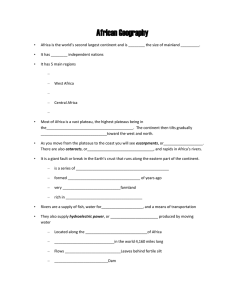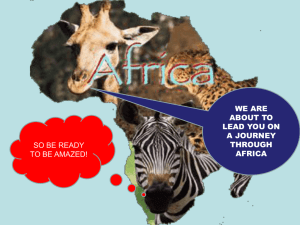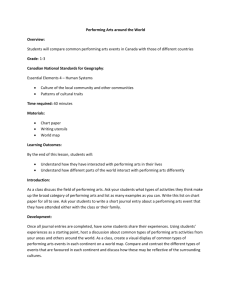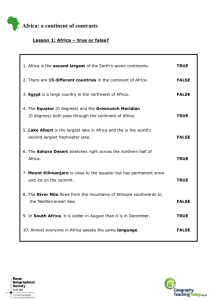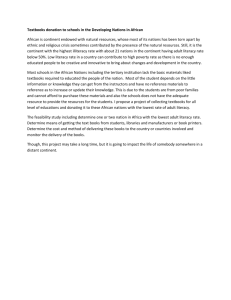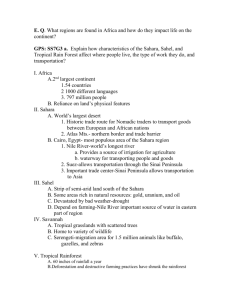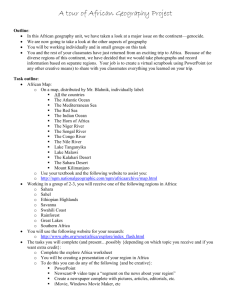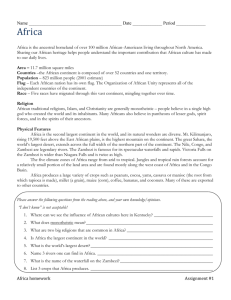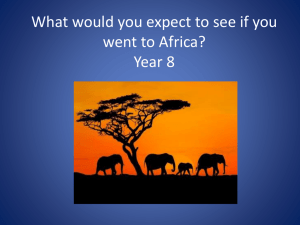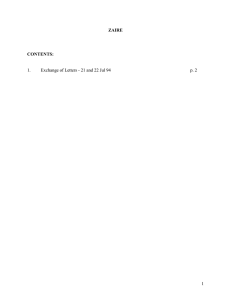AFRICA
advertisement
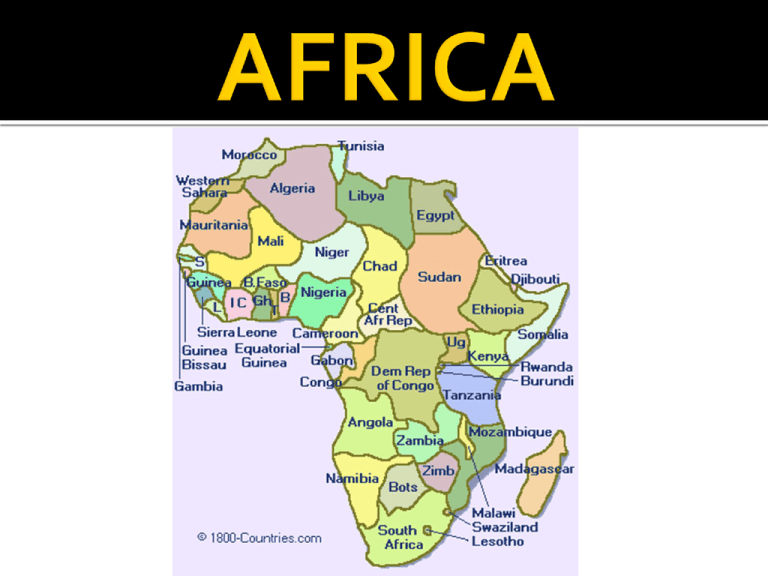
Newest country South Sudan Capital: Juba The worlds second largest continent 55 Nations; most of any continent Between two oceans; Atlantic & Indian Part of major trade routes since ancient times North Africa – above the Sahara Desert Linked to the Middle East culturally West Africa – extends into Atlantic Part of major slave trade routes to new world Central Africa – home to Africa’s tropical rain forests South Africa – crucial to trade b/w oceans East Africa – Great Rift Valley, fertile land Africa is a continent of Plateaus The land made exploration difficult for Europeans Great Rift Valley – a split in the African Continent Rich in natural resources Hard to mine and transport because of the rough terrain Olduvai Gorge: bone that belonged to the ancestors of modern people Mountains: edges – Atlas Mts, Drakensberg Range, Mt. Kilimanjaro – highest mountain in Africa Deserts: Sahara (largest), Kalahari Coastal Plains Usage Provides Food Transportation Irrigation Hydroelectric Power Major Rivers Nile Zaire (Congo) Niger Zambezi Longest river in the world 4,160 miles long That is flying from California and back Home to early civilization Aswan High Dam Over 11,000 feet tall and 10 feet thick Pros – Hydroelectric Power, Irrigation Cons – Farmers upstream need fertilizer now Central Africa Provides Hydroelectric Power Can’t be navigated by boats Poor Trade West Africa Provides water for irrigation Predictable Flooding Food Crisis South Africa Victoria Falls 1 mile wide 420 feet high Located b/w Zambia and Zimbabwe Kariba Dam Provides Hydroelectric Power Gold and Diamonds in African Rivers Europeans mined much of their gold from West Africa beginning in the Age of Discovery Power-WealthTrade Copper Zaire and Zambia Platinum and Cobalt South Africa, Zaire, and Botswana Oil Nigeria, Botswana, Libya, Algeria, and Gabon Profits from African Nations often end up in other foreign countries Societies developed near water sources Farming, Hunting & Gathering, Herding, Fishing, & Industry Major urban areas developed on: Mediterranean Coast Western Savannas East Coast Over 1,000 Languages Groups few miles apart speak different languages Small tribes migrated constantly and used their own language Trade and diffusion create new languages Work on only section 1 in the packet These are the first two pages front and back.
